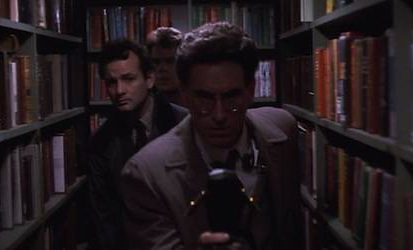
S P O T L I G H T
A Journal of the USC School of Cinematic Arts

A Journal of the USC School of Cinematic Arts
"Monsters in media so often offer us that escape from societal constraints, representing that which repulses the hetero-patriarchal system we live in—the different, the scorned, the uncanny, the queer. "
Collective remembrance drifts away and warps throughout the passing down of generations, but even in the direct absence of trauma, it remains as a destabilizing force for the most detached generations. Situating the spreading of violence through young women who are encouraged to forget and ignore their trauma serves as an effective cautionary tale.
“…There is great emphasis on “future generations” in terms of tangible film, but the widespread integration of the internet in the 21st century has caused this discipline to take on new life. The film industry has only begun to formalize digital media as the standard form of production as recently as 2013, and now preservationists and archivists are faced with a learning curve on how to preserve “born digital media”.”
